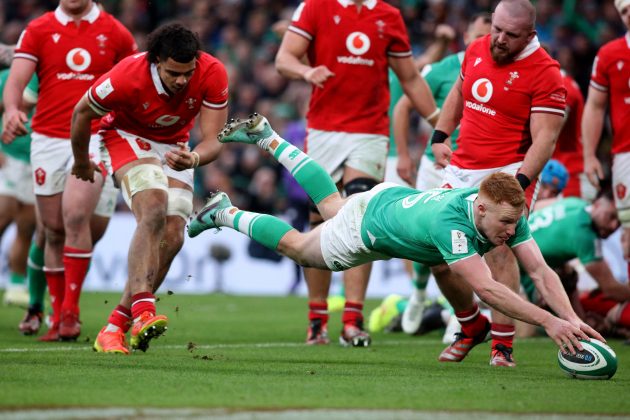Five points for a try, three for a penalty and everything else you need to know about rugby union's scoring system
The long-established rugby union points system arguably helps to make the game more exciting.
With tries, conversions, penalties and drop goals each carrying different point values, matches can turn in an instant. Indeed, unlike football or hockey, where a losing team must hit the net at least twice to take the lead, a single score in rugby can transform a defeat into a victory – and vice versa.
In this guide we explain how the rugby union points system works, and how it’s evolved since the days when scoring a try did nothing more than secure you a kick at the posts.
Rugby union points system
Try – 5 points

Wing Joanna Grisez scores France’s sixth try during their 40-0 Six Nations 2024 win against Wales (AFP/Getty)
In rugby’s early years, touching the ball down behind the goal line didn’t score any points at all. In an era when rugby matches were decided by goals scored rather than posts, it simply earned you a kick (or “try” at the posts. Then, for a brief time, the number of tries scored was used to settle matches where teams were tied on goals.
It wasn’t until the newly formed International Rugby Football Board codified the laws of the game in 1886 – creating a standardised rugby union points system in the process – that scoring a try was rewarded with a point.
In an effort to encourage attacking rugby, administrators gradually increased a try’s value over the course of the next century. The current five points for a try system was introduced in 1992, and has remained that way ever since – though six- and even nine-point tries have also been trialled.
Conversion – 2 points

The ever-reliable Leigh Halfpenny kicks a conversion for Wales (Getty Images)
A try still earns you a kick at goal in line with where the ball was touched down. In the current rugby union points system, a successful conversion will add an extra two points to your score.
Penalty try – 7 points

Referee Andrew Brace awards a penalty try (Getty Images)
If the referee awards the attacking side a penalty try, they score seven points without having to kick the conversion.
Related: What is offside in rugby?
This wasn’t always the case as, prior to 2017, penalty tries were converted via a kick directly in front of the posts. World Rugby subsequently introduced this change to the rugby union points system to help speed up the game.
Penalty – 3 points

England’s Emily Scarratt slots home a winning penalty against France (Getty Images)
Successfully kicking a penalty between the posts has been worth three points for nearly 140 years, and this remains the case in the current rugby union points system.
Drop goal – 3 points

Jonny Wilkinson hits (probably) the most famous drop goal of all time. (Getty Images)
Seeing as a drop goal is just as valuable as a penalty kick, it’s remarkable we don’t see them more often in modern rugby.
Download the digital edition of Rugby World straight to your tablet or subscribe to the print edition to get the magazine delivered to your door.





